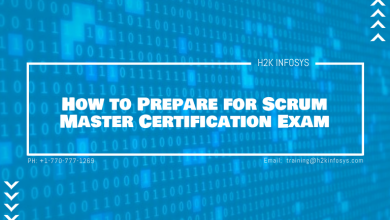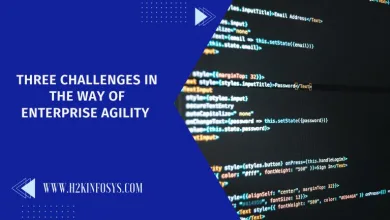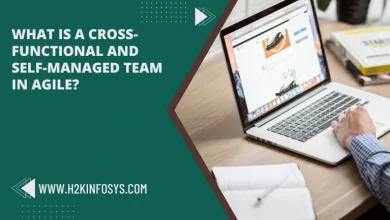Scrum Testing Methodology Tutorial

Scrum
Scrum is the strategy used in software testing to construct complicated software applications. It gives quick fixes for challenging issues. Scrum lets the development team concentrate on all areas of the development of software applications, such as consistency, performance, usability, etc. In software development, it offers accountability, review, and modification to prevent complications.
Scrum Testing
It is a test performed using scrum methods to ensure that the requirements of the software program are fulfilled. It requires the verification of non-functional metrics such as safety, functionality, efficiency, etc. The tester has no active part in the development, and therefore it is typically handled by developers with Unit Tests. Depending on the design and scope of a project, often specialized test teams are required.
Scrum Technique key characteristics
The main characteristics of Scrum are below:
- To meet constantly evolving programming requirements, Scrum has a fast set timeline of release cycles with a variable scope called sprints. There may be several sprints with each update. There may be many release periods for each Scrum Initiative.
- A sequence of sessions, activities, and milestones repeatedly.
- A testing and delivery practice known as stories to ensure that a certain amount of work is ready for any sprint.
The Scrum Framework
The scrum framework is divided into three categories as illustrated below:
- Scrum Roles
In Scrum Testing Methodology, there are three major roles i.e. Scrum Master, Product Owner, and the Development Team.
| Scrum Master | Product Owner | Development Team |
| He/She leads the staff and ensures the productivity of the team. | He/she describes commodity attributes. | The team normally has around 5-9 participants. |
| He/She retains the block list and eliminates development obstacles. | The product owner specifies the date of release and the related features. | Developers, programmers, and occasionally testers are included, etc. |
| He/She coordinates for all tasks and responsibilities. | They select the functionality according to the product’s market appeal and productivity. | The team assembles and plans its tasks on its own. |
| He/She defends the team from outside involvement. | He/she is liable for the product’s profitability. | Has the freedom to do anything within the project’s parameters to achieve the sprint target. |
| Calls for regular reporting, sprint review, and meeting preparation. | He/she may accept or reject the outcome of the work object. | Participating actively in regular ceremonies. |
- Scrum Ceremonies
Planning the sprint: A sprint starts with the team which imports stories from the release backlog into the sprint backlog. In the Sprint Backlog, the testers quantify the initiative to assess the different stories.
Daily Scrum: It takes about 15 minutes and the scrum master acts as a host. The participants would address the work done the day before, work scheduled for tomorrow, and problems facing them during a sprint. Daily Scrum Progress of the team is checked at the regular stand-up meeting.
Sprint Review/ Retrospective: It takes 2-4 hours to review the objectives the team has achieved and the lessons learned in the previous sprint. The scrum master acts as a host.
- Scrum Artifacts

A scrum process includes
- User stories: User stories are a brief overview of the program’s features under test.
- Product Backlog: A series of stories collected from users is the product backlog. The product owner prepares the product backlog and monitors it. The product owner shall assign it preference, and with the approval of the product owner, everybody can modify it.
- Release Backlog: A timeframe for completing the number of iterations is known as a release. To determine the stories that should be aiming for a release, the product owner communicates with the scrum master. In a release, the stories in the release backlog will be finished.
- Sprints: It is a fixed timeframe, determined by the product owner and developer team, usually 2-4 weeks to complete the user stories.
- Sprint Backlog: In a sprint, it’s a compilation of user stories to be done. Work is never allocated during the sprint backlog, and the team registers for their work. Although the approximate outstanding work is updated regularly, it is owned and operated by the team. It is the list of activities in Sprint that must be completed.
- Block List: Blocklist includes a list of blocks and decisions which are managed and revised regularly by the scrum master.
- Burndown chart: Burn-down graphs reflect the overall development and completion of the work. The stories and features not done are depicted in a graph style.
Role of Tester in Scrum
The Tester does not play an important part in a scrum process. Tests are typically conducted by the developer with unit tests. At each sprint, the product owner engages regularly in the process of testing. Depending on the scope and difficulty, dedicated test teams can be assigned to Scrum projects.
Scrum Testing Activities
During the different phases of Scrum, testers perform the following activities:
- Sprint Planning
- A user story will be selected from the product backlog by the tester and will be checked in sprint preparation.
- He/she can determine how many hours to complete testing for any chosen user story (Effort Estimation).
- He/she wants to know the sprint targets.
- Participate in the prioritization process as a tester
- Sprint
- Supporting developers in the testing of units
- User-story test until finished. In an environment where both the tester and the developer work side by side, test implementation is carried out. Defects that are monitored regularly are reported in the Defect Management tool. At the scrum conference, faults may be transferred and analyzed. Defects are reassessed until they are addressed and deployed for testing.
- He/she engages in every daily stand-up meeting as a tester to speak.
- As a tester, any backlog object that cannot be done in the ongoing sprint can be taken to the upcoming sprint.
- The tester is in control of designing scripts for automation. The Continuous Integration (CI) method schedules automation monitoring. Due to short delivery periods, automation is critical. By using different open source or subscription-based software available on the internet, test automation can be done. This proves to be reliable in ensuring that all critical functions to be tested are checked. With a close bond with the team, appropriate test coverage can be obtained.
- Reviewing the effects of CI automation and submitting reports to stakeholders
- Performing non-functional tests for user stories accepted
- Coordinate to identify approval conditions for acceptance testing with the user and the product owner
- The tester performs acceptance testing (UAT) at the end of the sprint in some situations and checks the completeness of the test for the ongoing sprint.
- Sprint Retrospective
- He will see both leading and lagging areas in the latest sprint as a tester.
- He recognizes lessons learned and best strategies as a tester.
Test Reporting
The monitoring of Scrum Test metrics allows stakeholders clarity and traceability regarding the project. The recorded metrics help a team to assess their success and prepare their potential product enhancement strategy. For reporting, two metrics are often considered.
Burn down chart: The Scrum Master lists the approximate remaining jobs for the sprint each day. The Burn Down Map is nothing like this. It is updated regularly.
A burndown chart provides a brief rundown of the project development, this chart includes details such as the overall amount of work to be done in the project, the number of sprint work done, etc.
Velocity history graph: The graph of velocity history estimates the sprint team’s speed. It is a bar graph that shows how the performance of teams has evolved.






One Comment